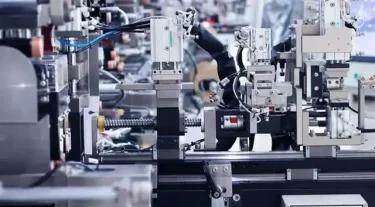Tape Manufacturing: Processes and Innovations

# Tape Manufacturing: Processes and Innovations
## The Basics of Tape Manufacturing
Tape manufacturing is a complex process that involves multiple stages to create the adhesive products we use daily. From packaging tapes to medical adhesives, the production methods vary depending on the intended application. The industry has evolved significantly over the years, incorporating new materials and technologies to improve performance and sustainability.
## Core Manufacturing Processes
### 1. Backing Material Production
The process begins with creating the tape’s backing material, which can be made from various substances:
– Plastic films (PP, PET, PVC)
– Paper
– Foam
– Fabric
– Metal foils
Manufacturers extrude or cast these materials into thin sheets, then often treat the surface to enhance adhesive bonding.
### 2. Adhesive Formulation
Adhesive development is a critical step involving:
– Rubber-based adhesives
– Acrylic systems
– Silicone formulations
– Hot melt adhesives
Chemists carefully balance viscosity, tack, and cohesion properties to meet specific performance requirements.
### 3. Coating Process
The adhesive is applied to the backing material using various techniques:
– Knife-over-roll coating
– Reverse roll coating
– Slot die coating
– Gravure coating
Precision in coating thickness is crucial for consistent tape performance.
## Recent Innovations in Tape Manufacturing
### Sustainable Materials
The industry is shifting toward eco-friendly alternatives:
– Bio-based adhesives
– Recyclable backing materials
– Water-based adhesive systems
– Reduced material thickness without compromising performance
### Smart Tape Technologies
Cutting-edge developments include:
– Temperature-sensitive adhesives
– Conductive tapes for electronics
– Self-healing adhesive systems
– Color-changing indicators for proper application
### Advanced Manufacturing Techniques
Modern production facilities utilize:
– Automated quality control systems
– AI-driven process optimization
– Nanotechnology in adhesive formulations
– Energy-efficient curing processes
## Quality Control and Testing
Rigorous testing ensures tape performance:
– Peel adhesion tests
– Shear resistance measurements
– Temperature stability evaluations
– Aging simulations
– Environmental impact assessments
## Future Trends
The tape manufacturing industry continues to evolve with:
– Development of stronger, thinner tapes
– Integration with IoT for smart packaging
– Improved biodegradability
– Customizable adhesive properties
– Advanced medical-grade adhesives
As technology progresses, tape manufacturers will continue to innovate, creating products that meet the ever-changing demands of industries worldwide while addressing environmental concerns and improving efficiency.
Keyword: tape manufacturing


